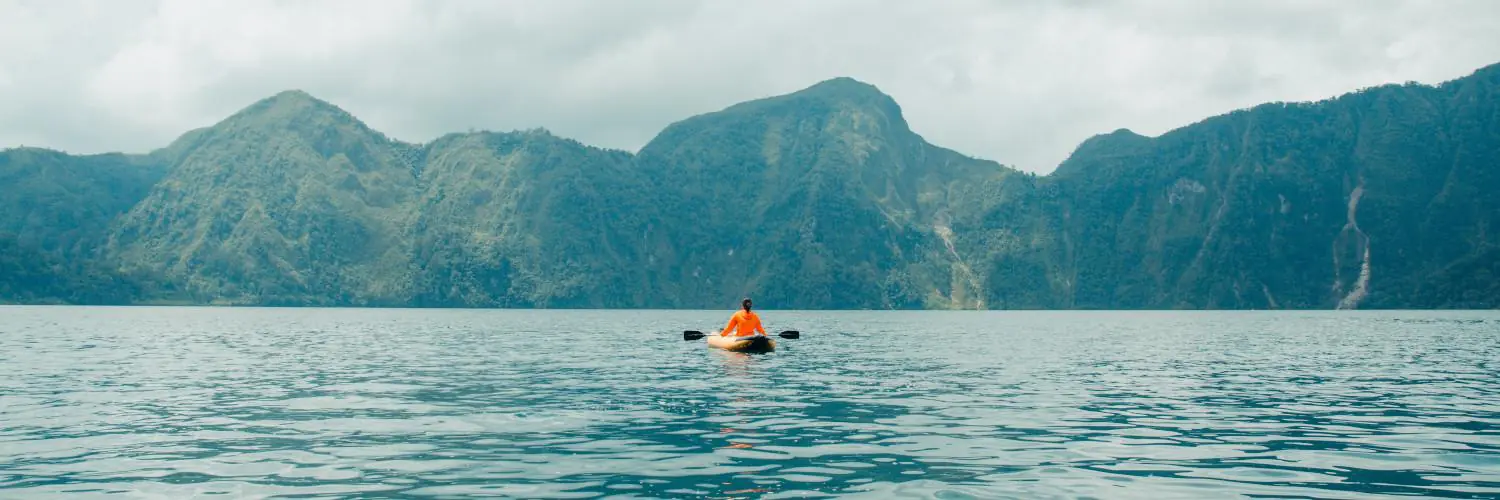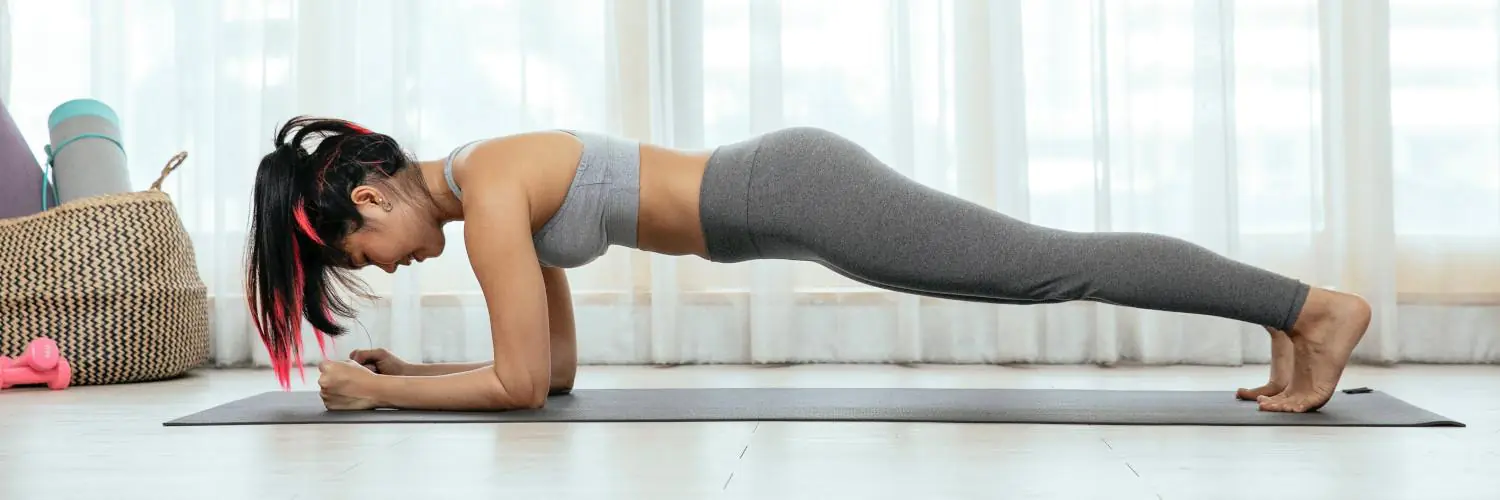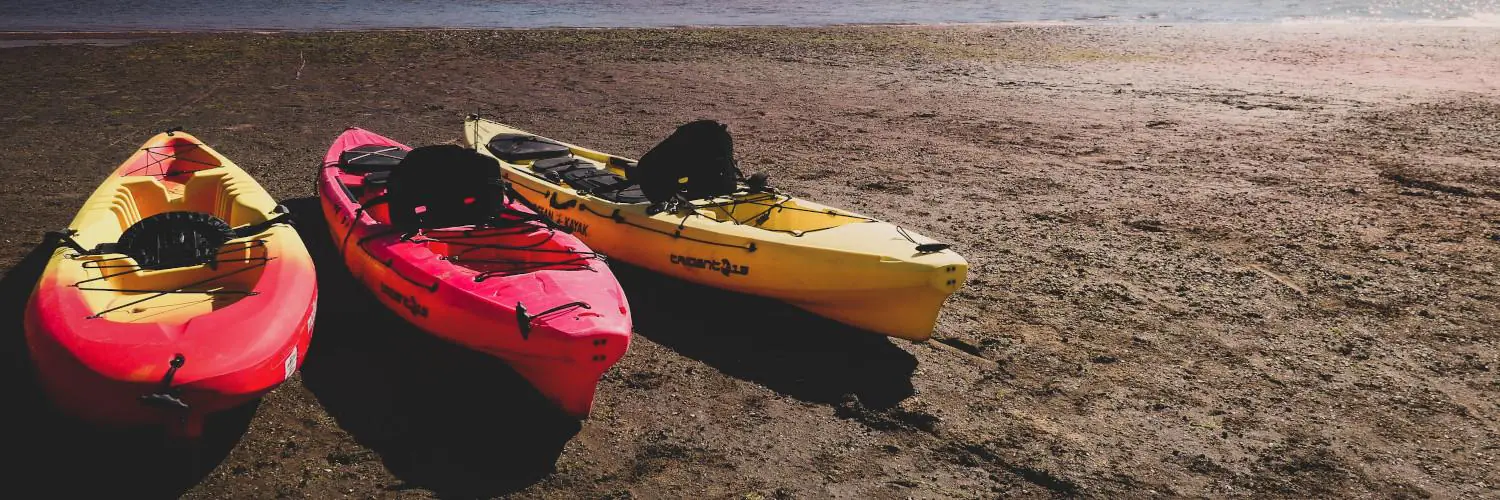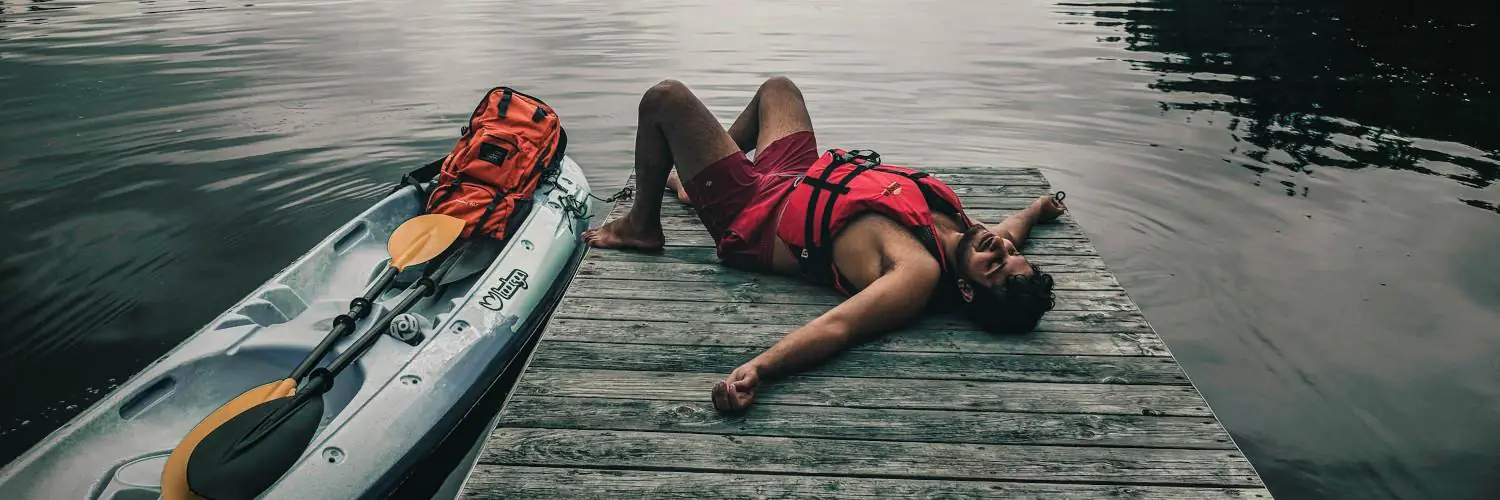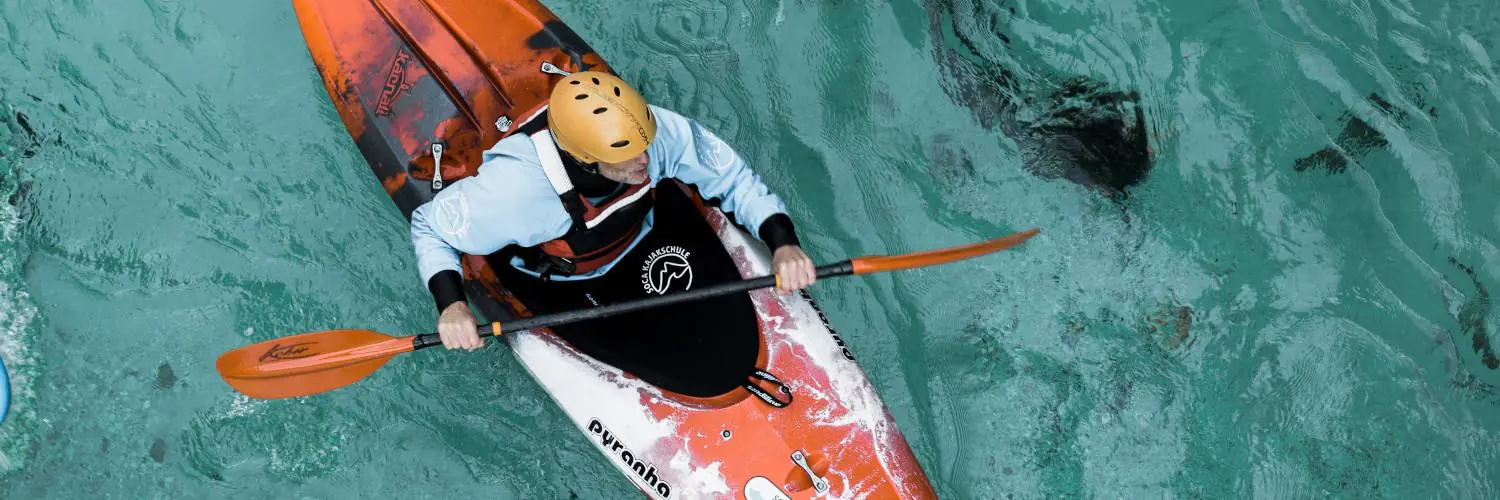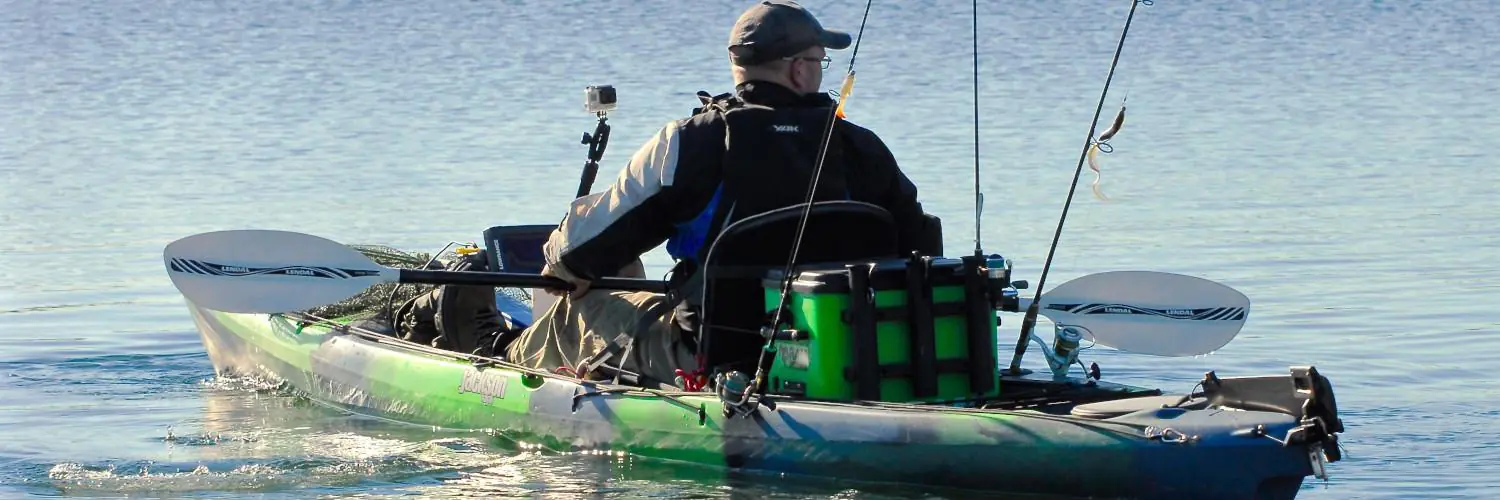Kayakers often face a choice between using paddle grips or gloves to improve their paddling experience. Both options offer benefits for comfort and control on the water. Paddle grips attach directly to the shaft, while gloves provide protection and grip for the paddler’s hands.
Paddle grips can enhance the feel of the kayak paddle and reduce slipping. They come in different materials and shapes to suit various paddling styles. Gloves, on the other hand, protect hands from blisters and cold water. They also offer a secure hold on the paddle.
The decision between grips and gloves depends on personal preference and paddling conditions. Some kayakers prefer the direct contact with the paddle that grips allow, while others value the warmth and versatility of gloves. Both options can make kayaking more enjoyable and efficient for paddlers of all skill levels.
Table of Contents
Understanding Kayak Paddle Grips
Kayak paddle grips provide comfort and control for paddlers. They come in different styles to suit various needs and preferences.
Benefits of Kayak Paddle Grips
Paddle grips protect hands from blisters and calluses. They make it easier to hold onto the paddle shaft during long trips.
Grips can improve a paddler’s control over the kayak. This leads to better steering and more efficient strokes.
Some grips are made of soft materials that absorb shock. This reduces hand fatigue and makes paddling more comfortable.
Paddle grips can also increase warmth in cold conditions. They act as a barrier between hands and the cold paddle shaft.
Different Types of Paddle Grips
Foam grips are lightweight and provide basic cushioning. They’re good for casual paddlers and warm weather use.
Rubber grips offer more durability and better grip in wet conditions. They’re ideal for whitewater kayaking or rough seas.
Ergonomic grips are shaped to fit the hand’s natural curve. These can reduce strain during long paddling sessions.
Split grips cover only part of the paddle shaft. They allow paddlers to adjust their hand position easily.
Custom-molded grips can be shaped to fit a paddler’s hands perfectly. These offer the best comfort but are more expensive.
The Role of Gloves in Kayaking
Kayaking gloves protect paddlers’ hands and help them grip the paddle. They provide warmth in cold conditions and shield against blisters during long trips.
Types of Kayaking Gloves
Neoprene gloves are popular for cold water paddling. They offer good insulation and stay warm when wet. These gloves come in different thicknesses for various temperatures.
Synthetic gloves work well in milder conditions. They’re often made from materials like nylon or polyester. These gloves dry quickly and allow more finger dexterity than neoprene.
Some paddlers prefer fingerless gloves. These protect the palms while leaving fingertips free for tasks that need more sensitivity.
Key Features of Paddling Gloves
Good kayaking gloves have grippy palms to help hold the paddle. This is often done with textured rubber or silicone patterns.
Insulation is crucial for cold-water paddling. Thicker gloves provide more warmth but can reduce feel and control.
Fit is very important. Gloves should be snug but not tight. Too loose, and they can cause blisters or slip off.
Many gloves have adjustable wrist closures. These keep water out and heat in.
Durability matters, especially around high-wear areas like the palms and fingertips. Reinforced sections can extend glove life.
Comparison Between Grips and Gloves
Kayakers have two main options for improving their paddle control: grips and gloves. Each offers unique benefits for grip, comfort, warmth, and durability.
Grip and Comfort
Paddle grips provide a custom fit for your hands on the shaft. They come in various materials like foam or rubber. These grips can improve your hold and reduce fatigue during long paddling sessions.
Kayaking gloves, on the other hand, fit your hands directly. Many have textured palms for better grip. Gloves allow more finger dexterity than grips. This can be helpful for tasks like adjusting gear or tying knots.
Some paddlers find grips more comfortable for extended use. Gloves may cause sweating or skin irritation for some people. Personal preference plays a big role in choosing between the two options.
Insulation and Warmth
Gloves clearly win for thermal protection in cold weather. They cover your whole hand and come in different thicknesses. Neoprene gloves are popular for their insulating properties even when wet.
Grips offer little warmth on their own. In cold conditions, paddlers using grips may need to wear gloves anyway. This somewhat defeats the purpose of having grips installed.
For summer paddling, fingerless gloves can provide sun protection while keeping your fingertips free. Grips don’t offer any sun protection for your hands.
Durability and Maintenance
Paddle grips tend to be very durable. Once installed, they can last for years with minimal care. You may need to occasionally clean them or replace worn sections.
Gloves require more frequent replacement. They can wear out quickly, especially in high-friction areas like the palms. Gloves also need regular cleaning to prevent odors.
Grips stay on your paddle, so there’s no risk of losing them. Gloves can be misplaced or blown away in windy conditions. This is a point to consider for those prone to losing gear.
Choosing the Right Gear for Cold Weather Kayaking
Proper gear is crucial for safe and comfortable cold weather kayaking. The right equipment protects against cold shock and hypothermia while allowing full paddling motion.
Evaluating Cold Weather Paddling Needs
Water and air temperature determine what gear kayakers need. For water below 60°F, insulation is key. A dry suit offers the most protection in very cold conditions. It keeps the body completely dry if capsized.
Neoprene gloves or mittens shield hands from icy water. Thicker neoprene provides more warmth but reduces dexterity. Thin gloves work well for milder cold.
Pogies are neoprene shells that attach to the paddle. They allow direct hand contact with the shaft while blocking wind and water. Many kayakers prefer pogies over gloves for better grip and control.
Combination Strategies for Optimal Protection
Layering different gear types maximizes warmth and flexibility. Thin gloves inside pogies boost insulation while maintaining dexterity. A dry suit with proper base layers regulates body heat.
Kayak mitts offer more warmth than gloves but less paddle control. They work well for very cold trips with minimal maneuvering. Some paddlers use mitts with pogies in extreme conditions.
Testing gear combinations before long trips is important. This ensures comfort and proper fit. It also builds familiarity with how each item affects paddling technique.
Maintaining Hand Health and Performance
Proper hand care is crucial for kayakers to prevent injuries and maintain performance. Good techniques and gear choices can help avoid fatigue and blisters during long paddling sessions.
Preventing Hand Fatigue and Injuries
To reduce hand fatigue, use a relaxed grip on the paddle shaft. Avoid squeezing too tightly. Take frequent breaks to stretch and flex your fingers and wrists. Rotate your hand position on the shaft periodically.
Using ergonomic paddle grips can lessen strain. Some paddles have oval shafts that fit the hand’s shape better than round ones. Padded grips offer extra cushioning.
Wearing gloves can reduce friction and provide warmth in cold conditions. Fingerless styles allow more dexterity while still protecting your palms. Look for gloves with grippy palms to maintain control of the paddle.
Best Practices for Blister Protection
Blisters form from friction between the skin and paddle. To prevent them, keep hands dry and clean. Apply moleskin or athletic tape to blister-prone areas before paddling.
Gloves act as a barrier against friction. Thin liner gloves work well in warmer weather. For longer trips, use gloves made of moisture-wicking materials.
Break in new paddles gradually to toughen skin. Start with shorter outings and build up time on the water. If you feel a “hot spot” forming, stop and apply protection right away.
Using paddle grips with a textured surface can reduce slipping and rubbing. Some kayakers prefer foam grips for their softness and good traction when wet.

